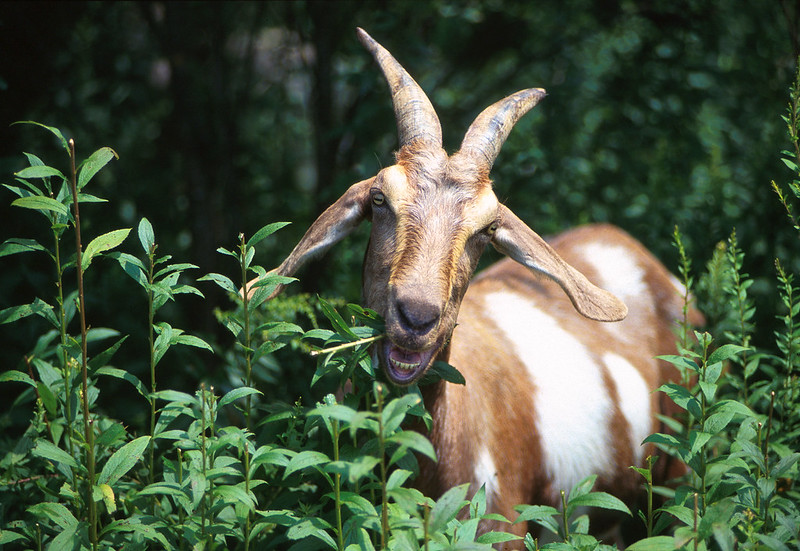CDC confirms bird flu in one person; poultry, ruminant experts warn of avian influenza outbreak
April 2, 2024
By Ryan McGeeney
U of A System Division of Agriculture
Fast Facts:
- Texas individual known to have had contact with infected cattle
- CDC says health risk to humans remains low
- HPAI confirmed in cattle, goats in Texas, Minnesota
(549 words)
LITTLE ROCK — The U.S. Centers for Disease Control and Prevention confirmed on Monday a human case in Texas of Highly Pathogenic Avian Influenza, commonly known as H5N1 bird flu.
According to a release from the CDC, the “person had exposure to dairy cattle in Texas presumed to be infected with HPAI A(H5N1) viruses. The patient reported eye redness (consistent with conjunctivitis), as their only symptom, and is recovering.”
The confirmation does not change the CDC’s overall human health risk assessment for HPAI, which is currently considered low, according to the report.
The news comes on the heels of recent reports from the U.S. Department of Agriculture detailing the spread of HPAI not only in poultry flocks, but also in cattle and small ruminants as well. Between March 7 and March 20, the virus was confirmed in flocks in six states, including a commercial facility in South Dakota affecting more than 31,000 birds. The rest of the flocks affected, however, numbered between 10 and 280 birds.
On March 20, the Minnesota Board of Animal Health reported HPAI in a juvenile goat, marking the first case of the virus in a domestic ruminant in the United States. As of March 29, USDA has confirmed HPAI in dairy cattle herds in Texas, Kansas and Michigan.
Dan Quadros, small ruminant specialist for the University of Arkansas System Division of Agriculture, said the USDA had detected more than 200 cases of HPAI in wild mammals.
“Now, with these cases of livestock infected in multiple states, producers are very concerned because this is a rapidly evolving situation,” he said.
“Although apparently wild migratory birds are believed to be the source of infection, the possibility of HPAI transmission between cattle cannot be discarded,” Quadros said. “We need to raise awareness about HPAI to prevent it from happening in Arkansas. We are encouraging producers to minimize the movement of cattle, sheep and goats.”
Quadros shared the following guidance from the University of Minnesota Extension:
- Do not allow poultry and livestock species access to ponds, wetlands and other stagnant water sources frequented by wild waterfowl, such as ducks, geese or swans.
- Watch poultry and livestock for signs of illness, including reduced appetite, fever, inability to stand, depression, nasal discharge, diarrhea, coughing and change in behavior.
- Consider housing poultry separately from other livestock species and minimize poultry access to pasture areas that are grazed by other livestock species.
- Do not allow poultry, waterfowl and wildlife to share water sources and feedstuffs with other livestock species.
- Unfortunately, current influenza vaccines used in horses are not effective against HPAI; always consult your veterinarian before administering vaccinations.
- Many cattle are vaccinated against Parainfluenza-3, a virus that can cause respiratory issues. Parainfluenza viruses are in a different family from influenza viruses and the PI-3 vaccine does not provide protection against influenza.
“We recommend that producers and consumers only drink pasteurized milk, consume dairy products made with pasteurized milk and cook meat to a safe internal temperature to kill bacteria and viruses, like influenza,” Quadros said. Safe temperatures include 145 °F for steaks, chops and roast; 160 °F for ground meat and 165 °F for poultry.
Producers experiencing any unexplained deaths in animals should consult a veterinarian or contact the Arkansas Department of Agriculture.
The Division of Agriculture has biosecurity resources for flock owners.
To learn about extension programs in Arkansas, contact your local Cooperative Extension Service agent or visit www.uaex.uada.edu. Follow us on X and Instagram at @AR_Extension. To learn more about Division of Agriculture research, visit the Arkansas Agricultural Experiment Station website: https://aaes.uada.edu/. Follow on X at @ArkAgResearch. To learn more about the Division of Agriculture, visit https://uada.edu/. Follow us on X at @AgInArk.
About the Division of Agriculture
The University of Arkansas System Division of Agriculture’s mission is to strengthen agriculture, communities, and families by connecting trusted research to the adoption of best practices. Through the Agricultural Experiment Station and the Cooperative Extension Service, the Division of Agriculture conducts research and extension work within the nation’s historic land grant education system.
The Division of Agriculture is one of 20 entities within the University of Arkansas System. It has offices in all 75 counties in Arkansas and faculty on five system campuses.
The University of Arkansas System Division of Agriculture offers all its Extension and Research programs to all eligible persons without regard to race, color, sex, gender identity, sexual orientation, national origin, religion, age, disability, marital or veteran status, genetic information, or any other legally protected status, and is an Affirmative Action/Equal Opportunity Employer.
# # #
Media Contact:
Ryan McGeeney
rmcgeeney@uada.edu
@Ryan_McG44
501-671-2120
